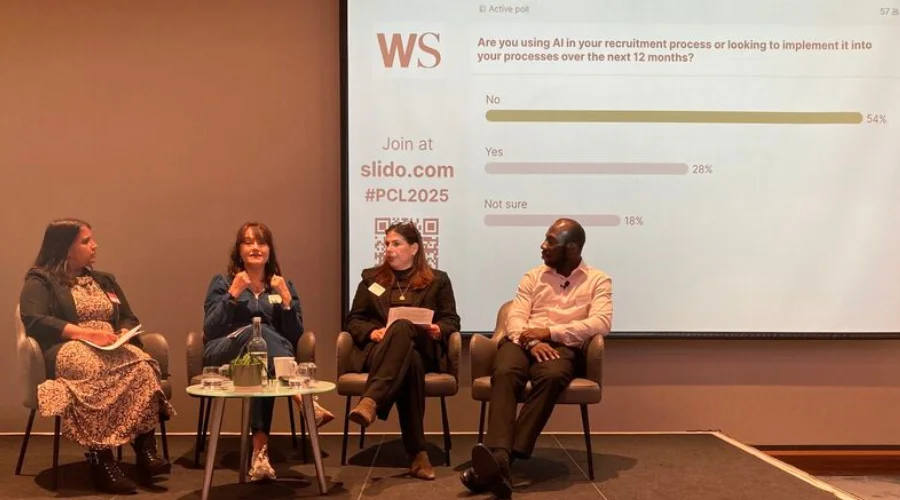Increasingly, presentations are a standard part of the job application process as more and more candidates are being asked to prepare and deliver a presentation as part of the interview process.
Long gone are the days where presentations are required for only the most senior opportunities. The application process for positions of all levels are now tasked with, or may involve, a presentation. This is often used not only to get insight into your experience but a way of assessing other attributes such as your communication style and thought process.
Presentations can be daunting, not just the delivery, but the preparation too. Facing questions like, what to cover in terms of content? The best format to use? And more importantly, how to make sure that you are covering the most relevant information, in the timescale required.
Here are our 4 steps to get your presentation ready!
- Preparation
This comes in three parts. Firstly, you want to consider the purpose of the presentation. For instance: What do you want to achieve? Are you aiming to sell, persuade, entertain, or inform?
Next, consider your audience. Who are they and consider their relevance to the interview panel. What is their level of expertise? What ideas, assumptions, and approaches could they have?
Then decide on your key message. What will the audience learn? Why is it beneficial to them, and why is it of interest? Ensure you always have your strongest benefit in mind.
Researching the organisation and the interview panel using their website and other sources such as social media, partner organisations, competitors, Google, and Glassdoor reviews etc, will give you an idea of who you are presenting to. It will also provide you with information on the current status of the organisation, prospects for the future, characteristics they may be looking for in a new employee, and the vacancy they are hoping to fill.
If you are given a presentation brief, prepare accordingly and do not stray from making the points or topics they have asked you to cover.
- Content
A good way to start thinking about what you want to include in your presentation is to brainstorm the main points around your key benefits and to state the reasons why. At first, there may be several points, and you will want to tie in some of your research to reflect the current status of the organisation and any future plans they have.
Once you have done this, you can start to apply a structure, think of it like a story. You want it to have a beginning to grab the audience’s attention e.g. ask a question and announce your key message. Next, the middle, this is where you have three main points but then expand these into 2 or 3 subpoints. Finally, an end. Here you repeat the key message and give a call to action e.g. Any questions?
- Edits
Once you think your presentation is ready, start to go through it with a fine-tooth comb. Remember who your audience is and make sure they are familiar with the language you will use. i.e. refrain from using any jargon unless you are certain they will understand.
If you are using a digital presentation tool such as PowerPoint, remember to use only a couple of words per slide or use images. This way you won’t be tempted to read off of the slides or lose your audience as they get distracted by reading instead of listening to you. The same can be said for flashy transitions and graphics.
Keep things clear and concise, and eliminate long sentences. Using bullet points is a good way to keep the attention of your audience. Adding metaphors and images also helps to keep people engaged.
- Review, edit and practise!
It is essential that you stick to any time limit you have been given. One of the things a presentation will demonstrate to the panel is your self-awareness and time management skills. Ideally, spare yourself 1 or 2 minutes as people tend to speak faster when they are nervous, but it will also give you some time for running over.
Even though they may not understand your content, it is really important to practise in front of friends or family beforehand. If this isn’t possible, try and record yourself so you can test your speed and hear how you sound. Some key things to watch out for are fillers you may use such as “errrm” and using the word “like” a lot. Assess whether you speak faster or slower at different points. Do you read your notes instead of speaking to your audience? How is your volume and projection?
Also, be sure to think of questions your audience may ask you and consider your answers. You can always have a few things jotted down on your notes that you can refer to if a question arises.
Finally, always have a hard copy where possible to hand in case there are any technical issues on the day, and don’t forget to offer your interviewers a copy of your presentation and notes via email in case they want to look over these at a later date.
For more advice and guidance on preparing for interviews, why not check out the other resources we have available on our Employability Support Hub, including a Presentation Table which is a great way to help you construct presentations.
Or get in touch with us today on info@tpp.co.uk or call 020 7198 6000.

